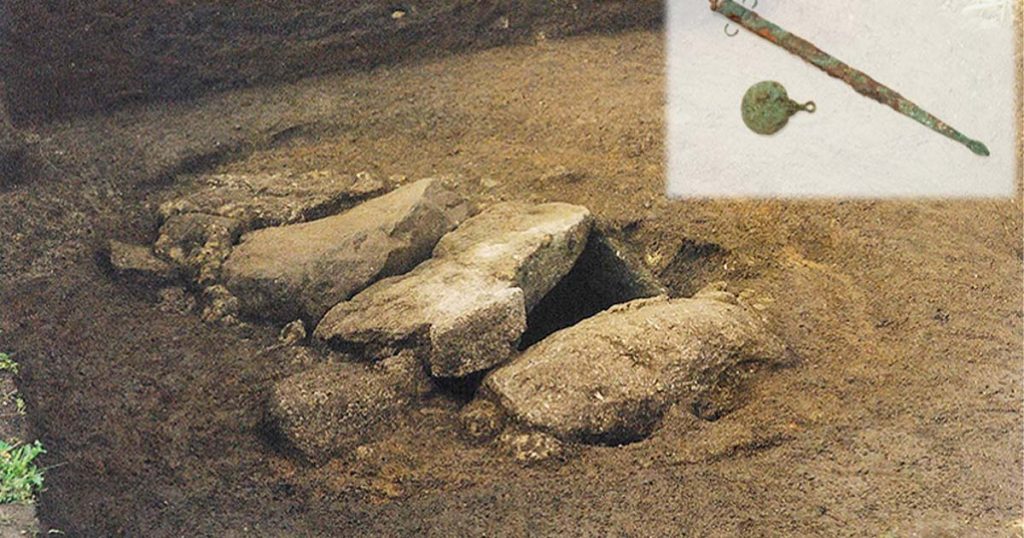Introduction
On one of the small and lightly populated Isles of Scilly off the coast of Cornwall in southwestern England, an astounding discovery was made in 1999. Archaeologists uncovered a unique stone-lined burial chamber dating back 2,000 years. Inside, an intriguing mixture of grave goods was found, traditionally associated with both men and women, leaving experts uncertain about the gender of the tomb’s occupant. However, cutting-edge DNA analysis has now revealed the truth, unearthing the remains of a woman—a revered warrior who defied ancient gender norms.
The Long-Lasting Mystery of Warrior Woman of Isles of Scilly
For over two decades, the enigma of the Isles of Scilly remains baffled archaeologists. The grave goods suggested a mix of male and female items, but it wasn’t until recent DNA testing that the gender could be confidently identified. This groundbreaking revelation challenges preconceived notions about the roles played by men and women in ancient British history.
Unraveling the Secrets of Warrior Woman of Isles of Scilly

The study that cracked the case was conducted by Historic England, a preservation organization that employed experts capable of extracting and analyzing DNA from an enamel tooth found within the Iron Age burial on the tiny isle of Bryher. This small island, encompassing just 330 acres, lies within the Isles of Scilly archipelago.
A Warrior Woman of Isles of Scilly Burial

The burial site contained more than just the remains of the warrior woman; it held evidence of her martial prowess. A copper alloy sword and metal shield buried alongside her indicate her involvement in ancient warfare. Moreover, intriguing keepsakes like a brooch and a bronze mirror, typically associated with women, shed light on her multifaceted identity.
DNA Testing Breakthrough
Previous attempts at DNA testing failed due to the skeletal remains’ brittleness. However, advances in DNA testing provided a much-needed breakthrough. Scientists at the University of California-Davis devised a sensitive technique ideally suited for testing brittle samples. Using this method, they managed to extract minuscule pieces of protein from the enamel of the tooth, leading to a 96% probability that the individual was female.
Shifting Paradigms of the Past

The isolated tomb on the tiny island within the Isles of Scilly archipelago was a burial place of honor for a female warrior. This revelation challenges the traditional view of ancient wars as male-dominated affairs. It suggests that some women may have participated in raids or were recruited to defend against them, potentially reshaping our understanding of Iron Age societies.
Conclusion
The discovery of the warrior woman in the Isles of Scilly has shed light on the roles of women in ancient history. DNA analysis has confirmed that she was a revered fighter, breaking stereotypes about gender roles in the ancient world. As more burials undergo re-analysis, we may uncover more hidden female warriors, enriching our knowledge of our ancestors.
Were female warriors common in Iron Age England? In Iron Age societies, female participation in collective violence might have been relatively normal. The discovery of the warrior woman in the Isles of Scilly suggests that women’s roles in warfare were more diverse than previously assumed.
Were female warriors common in Iron Age England? In Iron Age societies, female participation in collective violence might have been relatively normal. The discovery of the warrior woman in the Isles of Scilly suggests that women’s roles in warfare were more diverse than previously assumed.
Were female warriors common in Iron Age England? In Iron Age societies, female participation in collective violence might have been relatively normal. The discovery of the warrior woman in the Isles of Scilly suggests that women’s roles in warfare were more diverse than previously assumed.
What does the discovery of the warrior woman mean for ancient British history? The revelation challenges stereotypes about gender roles in ancient times. It shows that women were not just passive figures but actively participated in military endeavors and were revered warriors.
Will more burials be re-analyzed for hidden female warriors? With the eye-opening results of the new DNA test, it is likely that other degraded burials will undergo re-analysis. This could lead to the discovery of more female warriors from the past.



